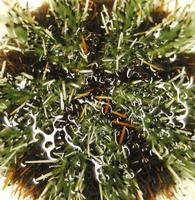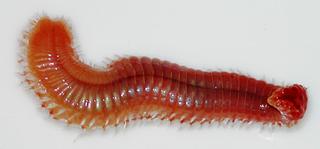 The Electric Blue Hermit Crab:The electric Blue Hermit crab originates exclusively from the Marshall Islands. This crab has electrifying blue legs with black banding, and its antennae stand out with its bright orange color. Both claws are close to being equal size, and are brownish green in color. This tiny crab lives in abandoned snail shells or it may resort to attacking and eating a snail so it can use the shell for its home.
The Electric Blue Hermit Crab:The electric Blue Hermit crab originates exclusively from the Marshall Islands. This crab has electrifying blue legs with black banding, and its antennae stand out with its bright orange color. Both claws are close to being equal size, and are brownish green in color. This tiny crab lives in abandoned snail shells or it may resort to attacking and eating a snail so it can use the shell for its home.The Electric Blue Leg Hermit Crab is a valuable addition to an aquarium because it will eat algae including green hair algae and cyanobacteria. In addition, it provides valuable aeration by sifting through the sand and it is reef-safe!
 Pin Cushion Urchin:The Pin Cushion Urchin, Mespilia globulus, has an oval to round body covered with hundreds of uniform spines. I recommend an urchin be added to a reef aquarium upon initial set up to keep algaes from having a chance to get out of control. It generally hides in the rock during the day, at night, it comes out to graze on algae, moving about by its suctorial podia that are aligned in five doubled rows. The aquarium should include large amounts of live rock on which it can graze. Rock formations need to be stable and able to withstand the movement of the urchin wedging itself in crevices.
Pin Cushion Urchin:The Pin Cushion Urchin, Mespilia globulus, has an oval to round body covered with hundreds of uniform spines. I recommend an urchin be added to a reef aquarium upon initial set up to keep algaes from having a chance to get out of control. It generally hides in the rock during the day, at night, it comes out to graze on algae, moving about by its suctorial podia that are aligned in five doubled rows. The aquarium should include large amounts of live rock on which it can graze. Rock formations need to be stable and able to withstand the movement of the urchin wedging itself in crevices.  Polychaetes; Bristle Worms: With over 15,000 different types of bristle worms, some aquarium safe, some not, the novice reefkeeper is usually alarmed when they come across their first worm. Centipede like, their nocturnal behavior and their ability to hide in small holes or under objects allows many of them to go undetected. This bristle worm above out stretched is over six inches long. Often the populations in an aquarium can reach many hundreds or thousands, most of which are never seen. Although they have the potential for causing problems, generally small populations do no real harm in a reef system. A large population of bristle worms in an aquarium usually is a good sign of overfeeding.
Polychaetes; Bristle Worms: With over 15,000 different types of bristle worms, some aquarium safe, some not, the novice reefkeeper is usually alarmed when they come across their first worm. Centipede like, their nocturnal behavior and their ability to hide in small holes or under objects allows many of them to go undetected. This bristle worm above out stretched is over six inches long. Often the populations in an aquarium can reach many hundreds or thousands, most of which are never seen. Although they have the potential for causing problems, generally small populations do no real harm in a reef system. A large population of bristle worms in an aquarium usually is a good sign of overfeeding. Bristle worms are absolutely wonderful at cleaning up detrius, arguably better than ANY other creature in your reef system. Others may say to get rid of them, I for one have a pretty good track record for healthy tanks and feel they are beneficial.
5 comments:
nice
Thank you anonymous....whoever you are. :) -Robert
Hola, ante todo te agradezco que hayas visitado mi blog, te cuento que algunas fotos las tomé yo y otras me las enviaron mis amigos que por cierto están muy lejos.
Algunas fots son imágenes que me gustaron y de alguna manera las uso como representativas para cada sección del blog, Somos amigos que buscamos una manera de estar un poco más cerca, y colaboramos en este blog.
Excelente tu blog, las fotos las tomas vos?
Eres bienvenido a mi blog las veces que quieras.
Besos
Gracias por visitar mi blog Marcela. Sí, tomo todas las fotografías en mi blog. ¡La fotografía es una manera excelente de comunicarse, uniforme a ésos alrededor del mundo que puede no entender inglés! Sinceramente, Roberto
Realmente las fotos que tomas son alucinantes, son obras de arte!!
Genial, te felicito.
Post a Comment